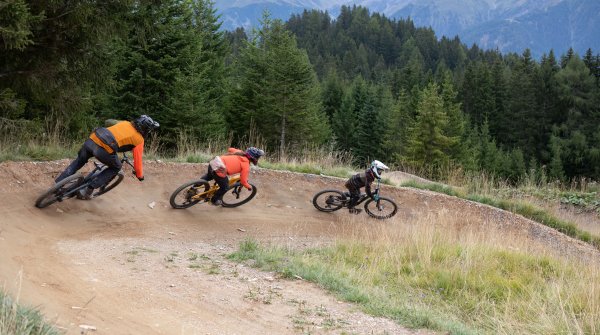Rusty chain, bulky gears, worn brake discs - if you're constantly on tour with your mountain bike, you have to expect wear and tear. But even longer periods of rest, often enough the winter season, can leave traces on the sensitive two-wheeler.
To avoid any unpleasant surprises on your next trip, regular checks are a must. And a short inspection is also easy on the wallet, because even minor adjustments to the gears, brakes or wheel can significantly reduce wear.
- Brakes
- Shocks & suspension fork
- Wheels & Tires
- Bike chain & gears
If going to a bike expert is too expensive or time-consuming, you can carry out a basic check at home without any problems. With a little manual skill and a tool or two, most minor repairs can be done yourself.
Know how: What to look for in a mountain bike check.
Down the slope at full speed, the wind in your face, bike and rider merged into one: The dream of every action sportsman can quickly turn into a nightmare if the brakes suddenly stop working.
It is therefore a must to check the condition of the brake pads. If they are too worn, cracked or uneven, there is only one option: replace them immediately! In addition, the brake release should also be checked. If the brake lever on the handlebars can be pulled all the way back, the brake needs to be bled.
It is not uncommon for disc brakes to make unpleasant grinding noises. In this case, it is important to find out the exact cause: Is it "just" the pads or is the caliper the culprit?
It usually helps to remove the wheel and re-center the brake caliper. To do this, pull the brake lever on the handlebars to the rear and loosen the screws on the brake caliper. Thorough cleaning of the brake pads can also help.

The shock absorber and suspension fork should also be put to the test. For a quick check of the suspension fork, simply sit on the bike and measure the compression depth.
On standard all-mountain bikes, the compression depth should not be more than 25 percent of the fork. Whether the damping needs to be increased is also determined quickly and easily: Push the handlebars, and thus the suspension fork, down as far as it will go and let it spring back up.
If the front wheel loses contact with the ground, the damping should be increased. To ensure that the fork functions optimally, a little lubricant may be applied afterwards. The bike will thank the rider in the terrain.
Tires and wheels also need to be checked. The first thing to look at is the degree of wear on the tire tread. If the tread is badly worn or if the casing is even cracked, you need a new one. Tire pressure and spoke tension must also be correct. If the wheel does not run smoothly, it may need to be re-centered.

To ensure that the bicycle chain works properly and can jump back and forth smoothly in the rear derailleur, the first thing to do is to clean it thoroughly. Stubborn dirt and old grease are best removed with a soapy solution.
After the suds have soaked in for a while, simply scrub them off with a toothbrush (wheel and driver should use separate toothbrushes). Once all impurities have been removed, the chain is carefully dried. Then apply chain lubricant and you're done.
The gear shift should be checked especially for an optimal position of the shift eye on the shift cassette. Please also adjust the tension on the shift lever correctly.
Finally, it is customary to once again check all screws on the frame, saddle, handlebars and gears and tighten them if necessary. Now you are ready for the next mountain bike tour.
- ISPO awards
- Mountain sports
- Bike
- Design
- Retail
- Fitness
- Health
- ISPO Job Market
- ISPO Munich
- ISPO Shanghai
- Running
- Brands
- Sustainability
- Olympia
- OutDoor
- Promotion
- Sports Business
- ISPO Textrends
- Triathlon
- Water sports
- Winter sports
- eSports
- SportsTech
- OutDoor by ISPO
- Heroes
- Transformation
- Sport Fashion
- Urban Culture
- Challenges of a CEO
- Trade fairs
- Sports
- Find the Balance
- Product reviews
- Newsletter Exclusive Area
- Magazine








